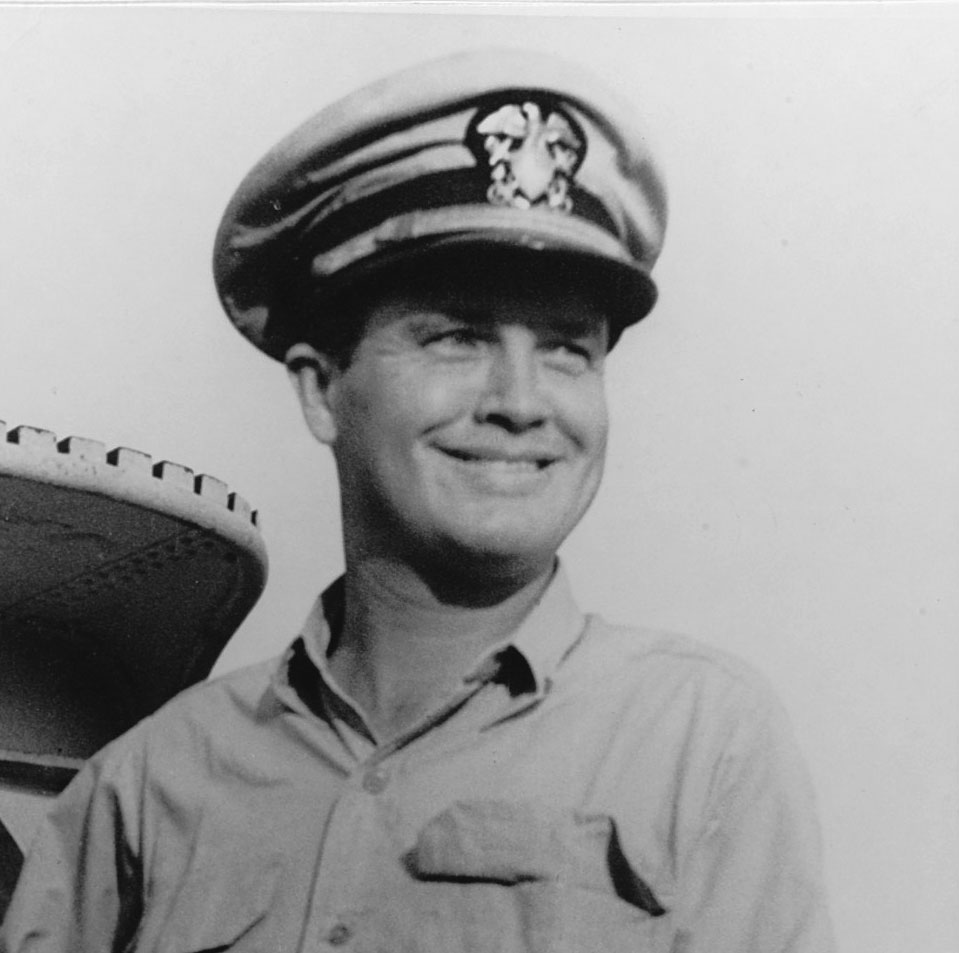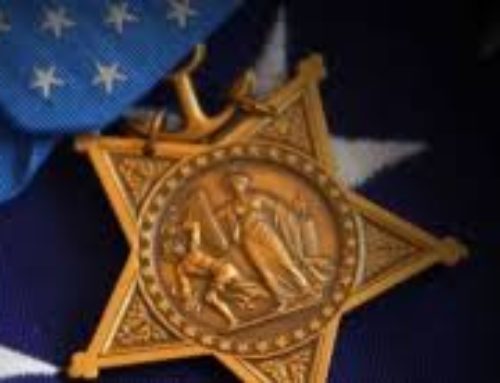Samuel David Dealey was born on 13 September 1906, in Dallas, Texas. After his father’s death in 1912, Dealey’s mother moved the family to Santa Monica, California. After spending the majority of his childhood there, they moved back to Dallas where he graduated high school. Following his graduation, Dealey attended Southern Methodist University for two years before receiving an appointment to the United States Naval Academy.
After his graduation from the Naval Academy in 1930, Dealey was commissioned an Ensign where he served on the USS NEVADA. In 1933, he was promoted to LT(jg) after which he briefly served aboard the USS RATHBURNE, before being sent to Submarine School in Groton, Connecticut. After graduating Sub school, he served aboard the USS S-34, USS S-24, USS NAUTILUS, and USS BASS.
Dealey would go on to serve as Executive Officer at Naval Air Station Pensacola, Florida where he was promoted to LT in 1938. He was appointed Executive Officer of the USS WYOMING and USS RUEBEN JAMES. In April 1941, he reported as the Prospective CO of USS S-20, upon which he served as the United States entered World War II. In late 1942, Dealey reported to help fit and command the new Gato-class submarine, USS HARDER (SS 257), upon which he would go on to serve six war patrols.
On its first patrol, in June of 1943, HARDER left Pearl Harbor bound for Honshu. On June 21st, HARDER saw its first attack, being driven deep into the muddy bottom by an enemy escort ship. According to records, Dealey got Harder out of the mud and two nights later recorded his first successful attack on the Japanese tender Sagara Moru. This was just the beginning, as Dealey and his crew would go on to carry out seven more attacks over the next four days.
Harder was forced to return to Midway in July 1943, due to engine troubles. After a brief and “hastily” put together repair, Harder set out for her 2nd patrol, once again to Hoshu. Dealey would lead another 14 attacks with a recorded five ships sunk. Suffering further engine issues, Harder was again forced to return to Pearl Harbor in October 1943.
Near the end of October, after undergoing maintenance and repairs on the troublesome engines, Harder was ordered (along with SNOOK and PARGO) to the Marianas. This “submarine wolfpack” was sent to attack Japanese shipping, as the United States was preparing to invade Tarawa. Plagued by poor communications, HARDER was separated from the PARGO, after making plans for a coordinated freighter attack. Undeterred, HARDER would continue on independently, where it would go on to sink 4 enemy ships before once again returning to Pearl Harbor.
Dealey’s HARDER served primarily on “lifeguard duty” for its 4th patrol, where the crew would rescue injured naval pilots found adrift I the Caroline Islands. After making a number of rescues, Harder and her crew would go on to sink the Japanese destroyers, IKAZUCH and MATSU MARU.
While Dealey served a total of six patrols on HARDER, it is the 5th patrol for which he is best remembered. “On May 26, 1944, Dealey was ordered to take Harder to Tawi Tawi to pick up some friendly guerrilla fighters from nearby northeastern Borneo. Heading into the Sibutu Passage on the night of June 6 he came upon an enemy convoy of three tankers, escorted by two protective destroyers. One destroyer detected him and attacked. Dealey let the enemy destroyer close to less than 1,100 yd before firing three torpedoes, taking out the destroyer Minatsuki. Dealey continued his pursuit, executing an end around. Diving to radar depth, he was attacked by the second destroyer. He fired all six bow tubes from just 1,200 yd; all missed, and HARDER plunged accidentally to 400 ft, losing contact. On 7 June, Dealey encountered another destroyer, Hayanami, south of Tawi Tawi, and attacked with three torpedoes from point blank range, 650 yd; with all three hitting their mark. With Hayanami burning overhead, one of her sister ships subjected Harder to a two-hour depth charge attack. Within six hours, there were eight hunting him. Amazingly, Dealey managed to slip away with Harder and her crew untouched. Harder silently moved up the Sibutu Passage to pick up the guerrilla force on the night of June 8/9 and headed back early the next day.
In the narrowest part of the Passage, Dealey spotted what appeared to be two more patrolling Japanese destroyers and made an undetected approach. Firing four torpedoes at the overlapping targets, he was rewarded with two hits on Tanikaze, which sank almost immediately. Dealey believed he had also hit and sunk another destroyer, though postwar records failed to confirm it. On June 10, 1944, Dealey sighted a large Japanese task force made up of three battleships, four cruisers, and their screening destroyers. Before Dealey could do anything, the submarine was spotted by an enemy airplane, and one of the enemy escorts pressed an attack on the sub. Dealey sent three torpedoes “down the throat,” heard several explosions, and thought he had scored another hit, before diving to avoid two hours of relentless depth-charging. (Postwar records would show the destroyer was able to avoid his torpedoes.) Dealey returned to Darwin on June 21 after an outstanding patrol that firmly established his reputation as the “Destroyer Killer,” with what was then thought to be a total of six to his credit.1” Dealey’s actions during this patrol, did not go unrecognized as Dealey was posthumously awarded the Medal of Honor for his efforts.
Sadly, Dealey and the HARDER crew would end their long, successful run during their 6th patrol, after being bombarded by a Japanese mine sweeper, just outside Dasol Bay, south of Lingayan. In all, Dealey and his crew are credited with sinking 16 enemy ships.
Information garnered from: https://usnamemorialhall.org/index.php/SAMUEL_D._DEALEY,_CDR,_USN1, https://www.navalsubleague.org/links/historymuseums/submarine-force-medal-honor-recipients/cdr-samuel-d-dealey-1944/, and Wikipedia.




